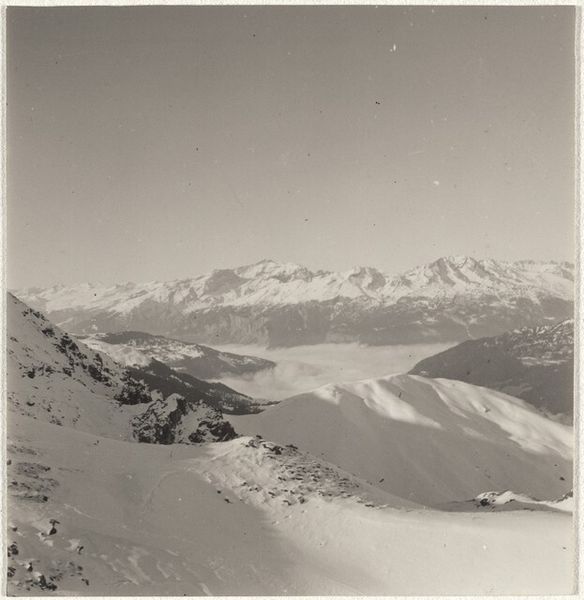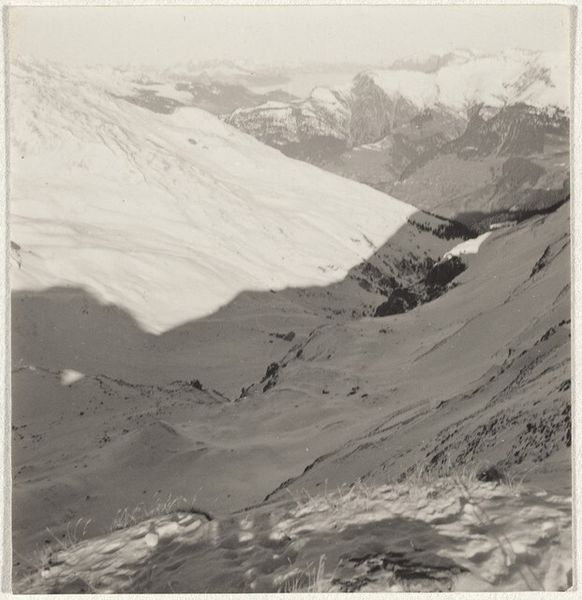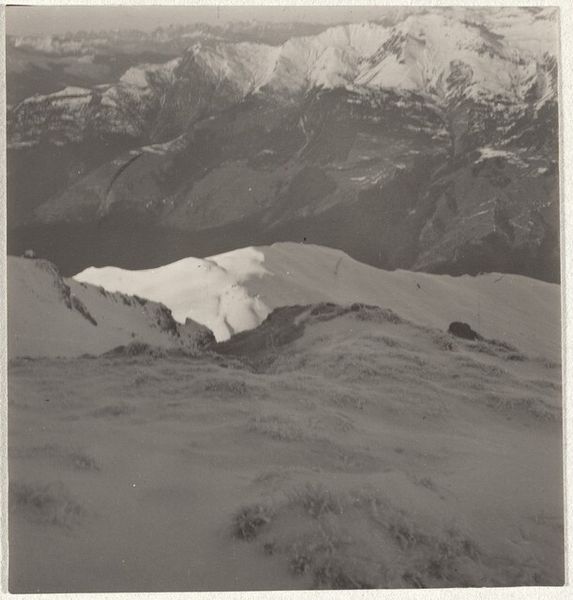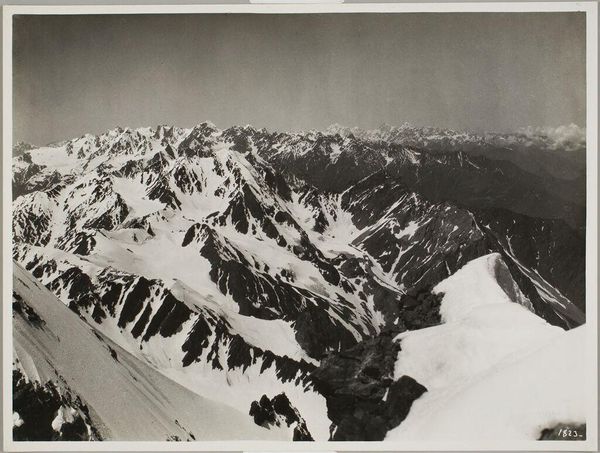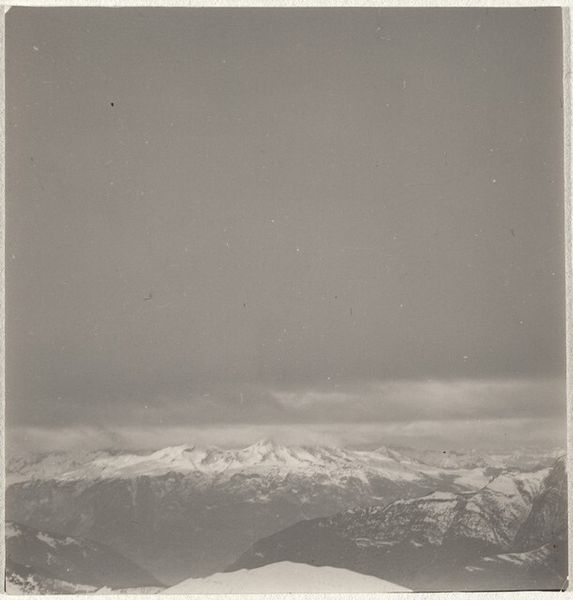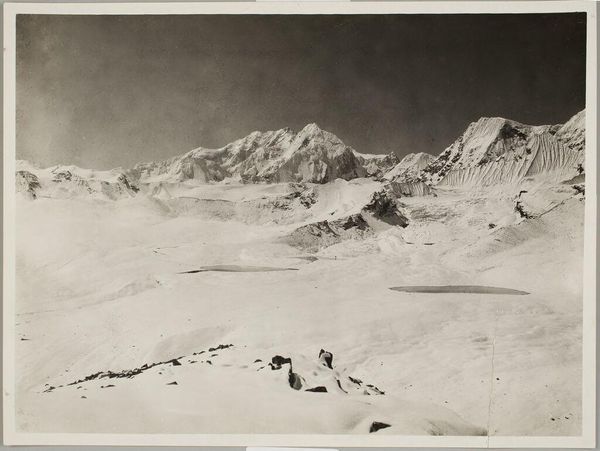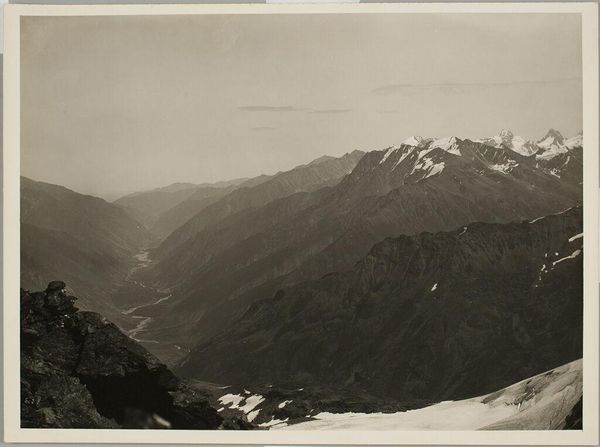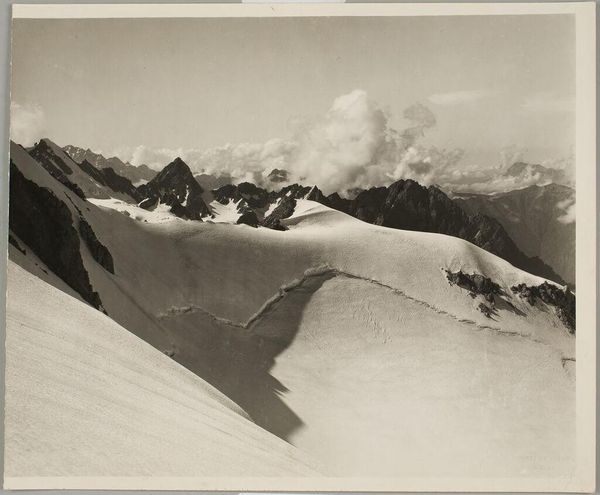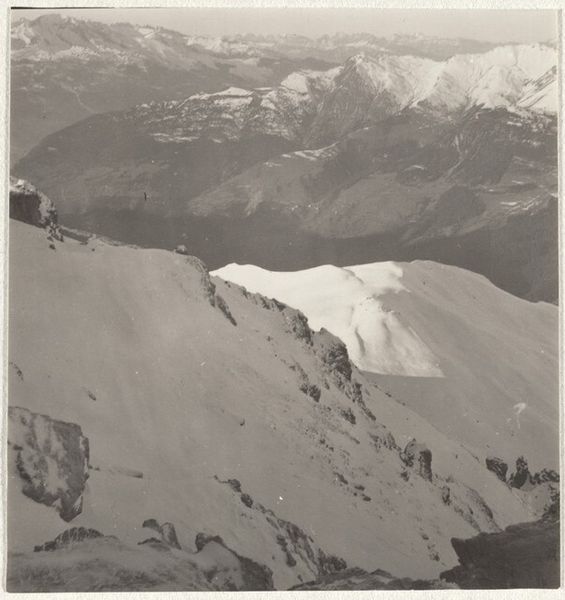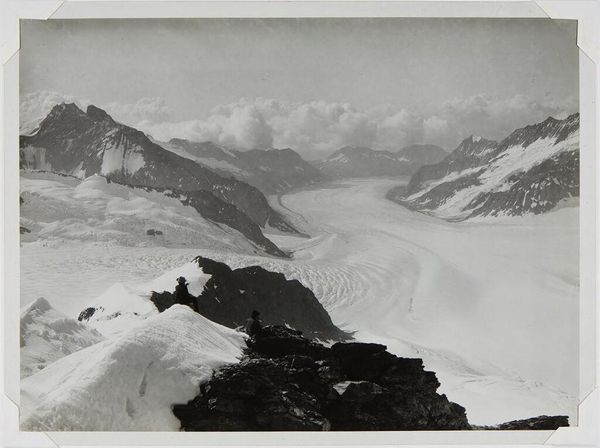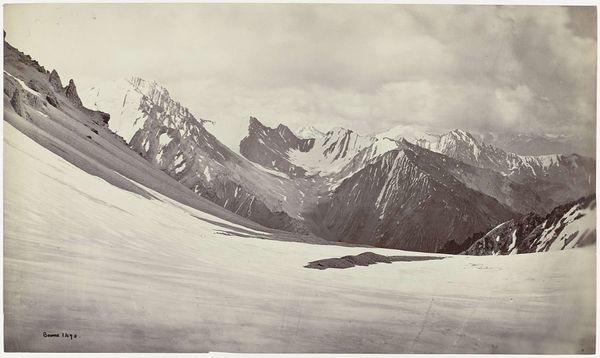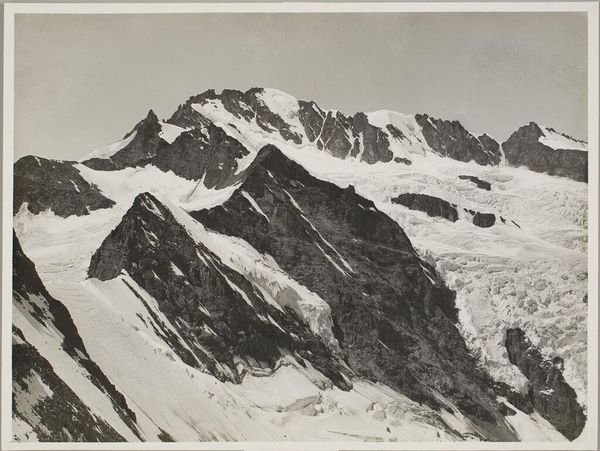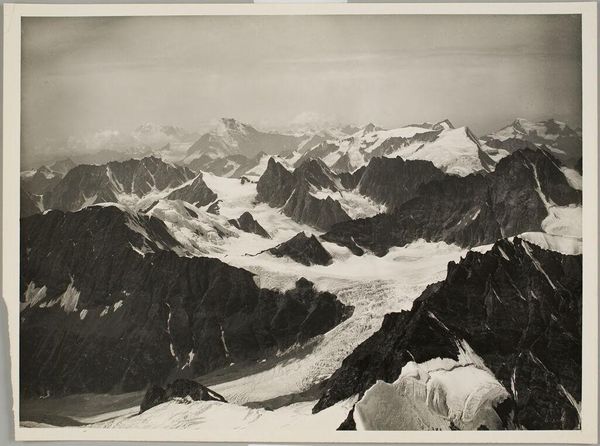
print, photography, gelatin-silver-print
#
photorealism
# print
#
landscape
#
nature
#
photography
#
outdoor scenery
#
gelatin-silver-print
#
monochrome photography
#
realism
#
monochrome
Dimensions: sheet (trimmed to image): 5.7 x 5.5 cm (2 1/4 x 2 3/16 in.)
Copyright: National Gallery of Art: CC0 1.0
Curator: Here we have Robert Frank's "Mountains--Landscape," a gelatin silver print made sometime between 1941 and 1945. It offers a sweeping view of snow-covered peaks under a wide, empty sky. Editor: My first impression is stark, almost desolate. The high contrast creates this austere beauty, the mountains receding into the distance feel infinite and, somehow, very lonely. Curator: Interestingly, landscape photography at that time was often employed to promote ideals about nation, about purity and exploration, which relates to what seems visually evident here. Frank’s origins as a Swiss Jew are very relevant to interpreting his approach and the time frame in which it was created, because these kinds of prints carry meaning. Editor: Absolutely, understanding the sociopolitical environment profoundly shifts our perspective. Landscape, and its artistic renderings, are never neutral, right? Consider the rise of fascism during this period; how Frank, as a Jewish artist, might have been responding, perhaps subverting, dominant ideologies tied to ideas about the land itself? Curator: Indeed. It's crucial to remember that Frank emigrated from Switzerland to the United States later in the 1940s. We need to situate this photograph within his broader artistic trajectory, taking into account issues of diaspora and representation. Also consider how the dark areas within the snowy slopes form deep patterns – do those symbolize pathways to unknown or threatening futures? Editor: That's an insightful point. And those very high contrasts seem so evocative of his feelings around those years when so many were facing very bleak uncertainties. It’s also a rejection of traditional landscape photography which always strives to be, more than anything else, idyllic. Curator: The photographic method, combined with the artistic viewpoint, elevates this visual impression and imbues the depicted scene with rich emotional power. Even though it is simply a mountain scene, through careful consideration, it is obviously loaded with significance and emotion. Editor: It prompts us to think deeply about the connection between personal identity, historical context, and the very act of representing nature itself, to seek personal symbolism among well established, often appropriated symbolism. Curator: Looking at the artwork, I am reminded again how visual symbols of the landscape preserve a cultural memory across diverse representations. Editor: I agree. I will forever think of this photo within the greater context of conflict and migration during World War II.
Comments
No comments
Be the first to comment and join the conversation on the ultimate creative platform.
